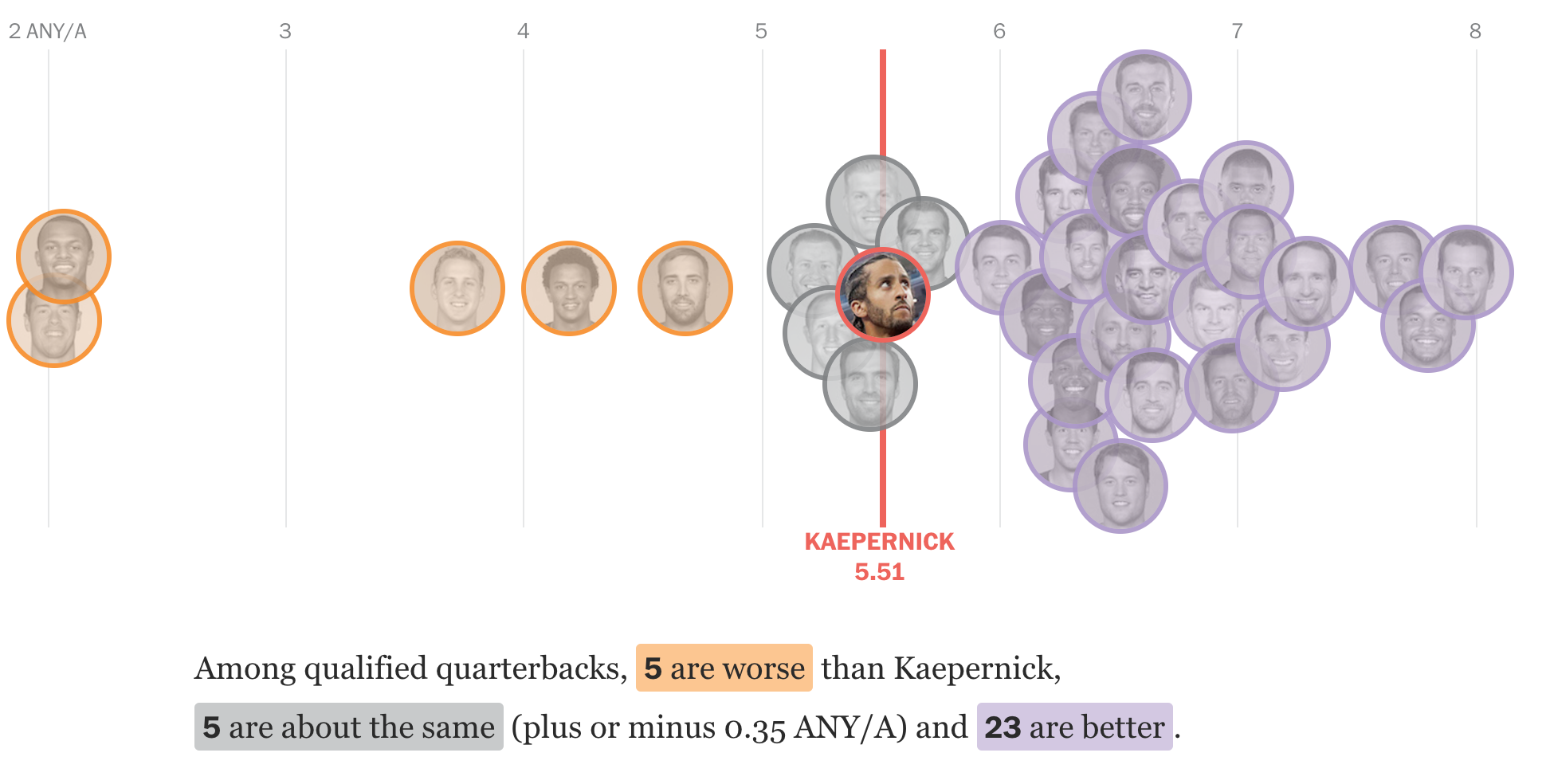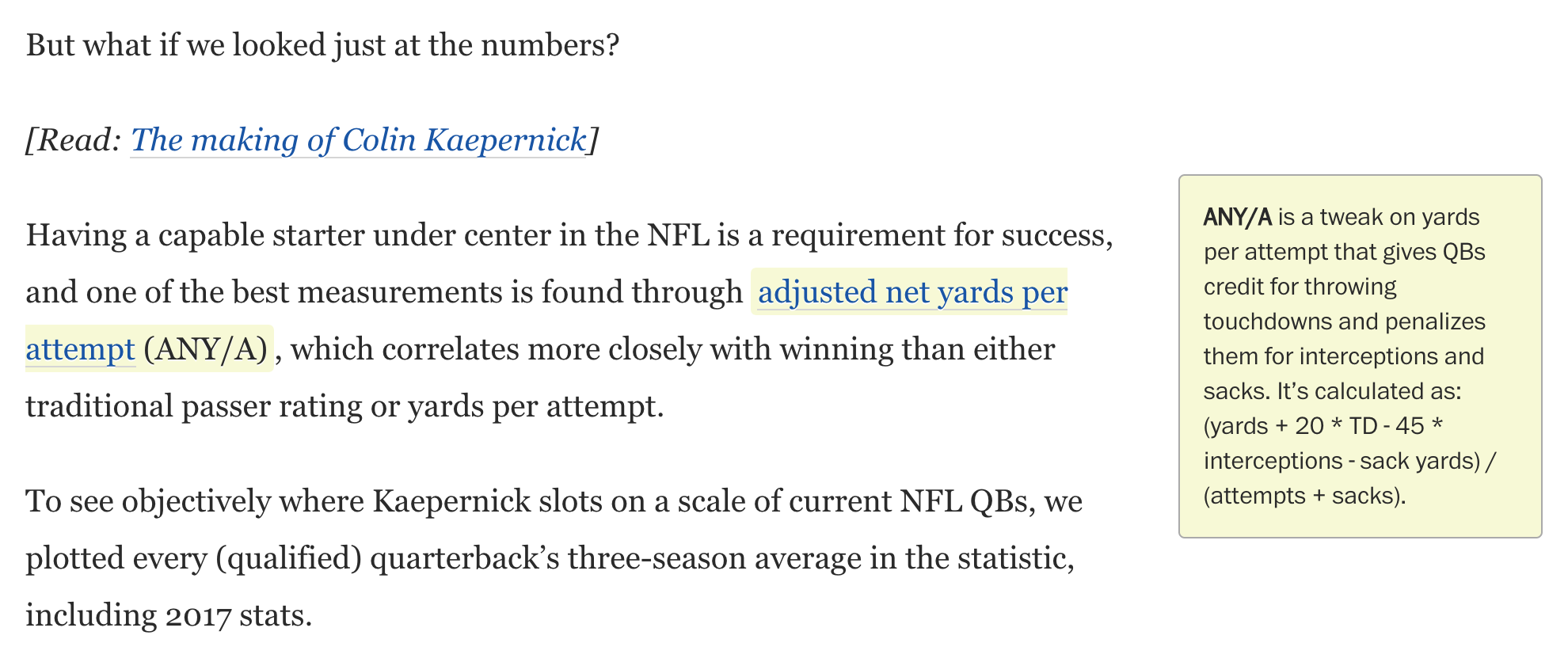Colin Kaepernick is a contentious figure in American football because of the protests he started against the US national anthem. While other protesting players remain on teams and play, Kaepernick remains unsigned despite what some say is a talent above other players. And as the American football season just began, this article from the Washington Post caught my attention.
Some of the arguments I have seen for Kaepernick’s unsigned status allege he just is not very good. But is that so? What does the data show? Well thankfully the Post dived into that and is running what we can best call a Kaepernick tracker comparing him to qualified quarterbacks in the NFL.

It turns out, he is a middle-of-the-pack quarterback, demonstrably better than half-a-dozen and sitting solidly amongst an almost third-tier or cluster of players. The data clearly shows that poor performance is not the reason for remaining unsigned, otherwise he would have replaced any number of quarterbacks. True, it could come down to his dollar cost, but most likely his remaining unsigned, compared to almost a dozen players underperforming him, is related to his protests.
Now from the design standpoint, I also wanted to call attention to this article because of the way it handles definitions. The article uses the statistic adjusted net yards per attempt to assess performance. But what does that actually mean? Well, in the digital margins of the piece, the designers include an explanation of that statistic. I thought this was a really well-done part of the article, not interrupting the main narrative flow for a definition that a portion of the audience probably knows. But the more casual followers or people more interested in the political nature of the story would have no idea, and this does a great job of explaining it to us laymen.

Credit for the piece goes to Reuben Fischer-Baum, Neil Greenberg, and Mike Hume.
